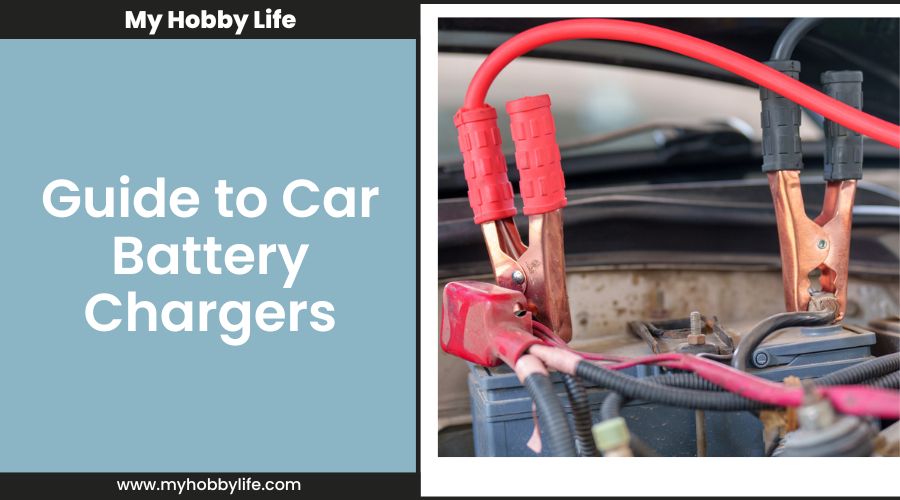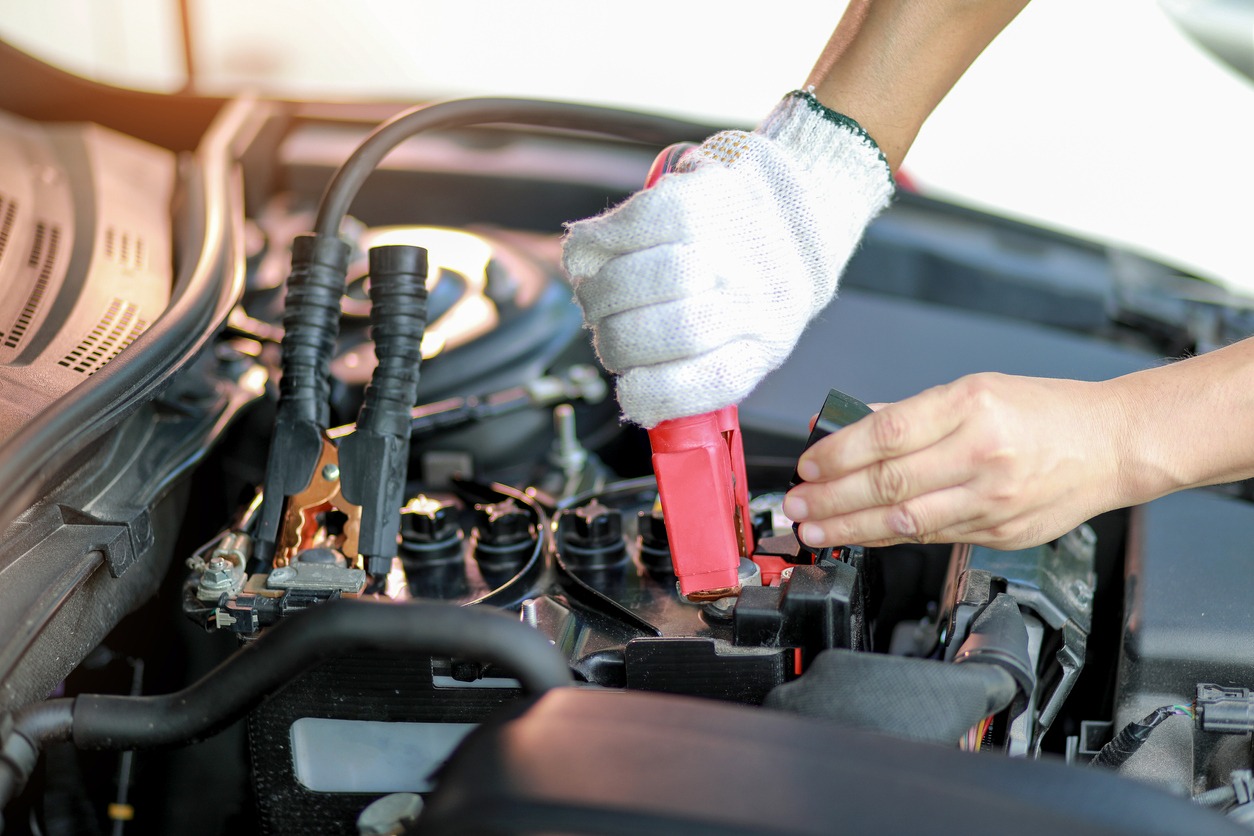Car batteries also need recharging just like a smartphone. A car automatically charges the battery as you drive. But there might be times when it needs manual charging due to a number of reasons, including leaving your car parked for a long time or a faulty generator that’s not able to pump enough current. The problem here is that unlike smartphones, car batteries do not come with their own charger, so you have to buy one yourself.
This guide focuses on some of the main factors you need to consider when buying a car battery charger. Buying the wrong product can damage the battery and even other electronics installed in your car, which is why you need to pick the right one. The most important thing is to check the battery specifications and buy a charger accordingly otherwise you risk permanently damaging the battery and other components.
Voltage and Amperage
Most regular car batteries are 12V, so picking a car battery charger is pretty simple when it comes to voltage. However, you still need to make sure your car has a 12V battery otherwise using an incompatible charger can cause irreversible damage to both the battery and electronics attached to it. For example, a motorcycle or a lawn tractor might come with a 6V battery, while a large vehicle might have a 24V battery, so you need to pick the charger accordingly.
Amperage refers to the amount of current a charger can deliver and is measured in amps/amperes. Too much of it can cause the battery to overheat and even explode in the worst-case scenario and no or very slow charging if too little is available. The voltage is a constant when it comes to battery charging, i.e. a 12V charger can charge a 12V battery, but amperage can vary (according to the intended use). Fast chargers have higher amp ratings, while slow or trickle chargers deliver low amps, which can vary between 2-amp to 15-amp.
If you can afford time, it’s recommended to charge the battery slowly i.e. buy a low amperage charger. Fast chargers tend to produce more heat than slow chargers, and batteries don’t like heat. There might be situations when a fast charger is a must and the only option worth considering, but for most situations a slower charger is considered a better option.
On-grid vs. Portable Battery Chargers
Battery chargers can be broadly classified into on-grid and portable chargers and choosing between them mainly depends on the use case. On-grid car battery chargers take power from a power outlet/socket, making these more suitable if you want to charge a battery at home. A portable battery charger can work without a power socket and is suitable for situations when you are away from home.
If you travel frequently and are on the road for quite a while, carrying a portable car battery charger makes more sense. Similarly, if your car sits in your garage for long periods of time, keeping an on-grid car battery charger is a better and a more economical option.
Types of Car Battery Chargers (By Purpose)
The main purpose of a car battery charger is to charge the battery, but chargers achieve the same goal in different ways. The three most common purposes of a car battery charger are:
Firing up the engine or jump starting. A lot of power is needed to do that and you need a heavy-duty car battery charger for this purpose
Maintenance or trickle charging. The charger sends small amounts of current to keep the battery maintained at a certain level
Conventional charging. Used to charge a dead or low-charge battery in a few hours (6-10). A fast car battery charger also fall under this category
Following are the common types of battery chargers and buying one depends on how you want to charge a battery.
Manual Car Battery Chargers
These chargers keep charging a battery regardless of its charge level and should be used under supervision. They’ll only stop charging after you disconnect them from the power source, so you have to manually keep an eye on the battery level/voltage using a voltmeter or an ammeter. These chargers are affordable and recommended if you only need recharging once in a blue moon.
Automatic Car Battery Chargers
These chargers stop charging when the battery reaches the desired charge level, so you don’t have to worry about keeping an eye and manually checking and disconnecting the charger. Automatic chargers are usually used as maintenance chargers as they keep batteries at a certain charge level.
Some of these chargers are also called float-mode/maintain mode or smart car battery chargers, which refer to chargers that deliver small currents to maintain the charge level. These chargers usually have microprocessor-controllers that start charging only after the battery level drops below a predefined level.
Many of these chargers also support fast charging without damaging the battery, its performance and battery life. You can keep a float-mode charger connected to the car battery for a longer time without having to worry about anything. Since these chargers are more expensive than other options, they make sense for people who need frequent recharging or have batteries they want to store at an optimal level.
Trickle Car Battery Chargers
Trickle chargers are essentially a type of maintenance chargers that you can keep attached to a car battery. Batteries, especially lead-acid batteries need to be stored at a certain charge level and these ‘slow’ chargers make sure that the voltage does not drop below the threshold. The main difference between these chargers and float-mode chargers is that most trickle chargers are manual and you need to disconnect them manually. However, unlike manual chargers, these deliver small amounts of currents and can be kept connected for a day or two.
Solar Car Battery Charger
These chargers can be used at home as well as outdoors, but the amount of current they can deliver is usually quite low. Solar chargers draw energy from the sun and convert it into current. Most of these chargers are manual, so you’ll need a charge controller if you want to use them for extended periods of time.
Key Factors to Consider When Buying
There are a number of factors you need to consider when buying a car battery charger including:
Engine/Battery Size (Ah)
Larger engines also come with high-capacity batteries, so you need a powerful charger to make it work. Battery capacity is represented in Ah (Amp hours). For example, if your car has a 50Ah battery, it’ll take a 10Ah charger 5-7 hours to charge it from zero to 100%.
You can simply divide battery’s Ah rating by charger’s ampere rating and get the amount of time (in hours) needed to charge it fully (add an extra 15% due to inefficiencies and other losses). A battery charger should at least have 10 percent of battery’s Ah rating e.g. you need at least a 5 AMP charger to charge a 50 AMP battery (will take 10-15 hours to fully charge).
Battery Type
Although most battery chargers work well with different types of batteries, including flooded/wet-cell, maintenance-free, AGM and VRLA, some might not be compatible with gel cell batteries. Just make sure that the charger you plan on buying supports the type of battery you want to charge.
Additional Features
You might need other features too such as multi-voltage charging, which can be useful if you travel between different countries where input voltages are different. Similarly, other features you might want to consider include waterproofing, dual-purpose chargers and multi-bank charging for charging multiple batteries at once.
Connecting a Car Battery Charger
The most important thing to remember is to connect the charger wires correctly. When connecting the charger with a battery, make sure to connect the red wire to the +ive (positive) terminal and the black to the -ive (negative terminal). When connecting, connect the positive wire first and then the negative to minimize chances of a short circuit. When disconnecting, disconnect the negative terminal first and then the positive terminal.
Conclusion
Understanding your charging requirements is the key to buying the right car battery charger. The main questions you need to ask include the purpose, where you want to use the charger, battery capacity and the charger output. A trickle charger is the recommended option if your car stays idle for long time periods and you want to maintain its charge level, while a heavy-duty charger is needed to fire up an engine.
Regardless of the type of charger you want to buy, it’s recommended to stick with reputable brands or products known to be reliable. The damage a cheap no-name charger can cause can be much greater than what you’ll save by buying such a charger. If you are not familiar with measuring voltages and current, it’s better to invest in an automatic or smart charger, so you don’t have to worry about keeping an eye on things such as voltage and charge level.


